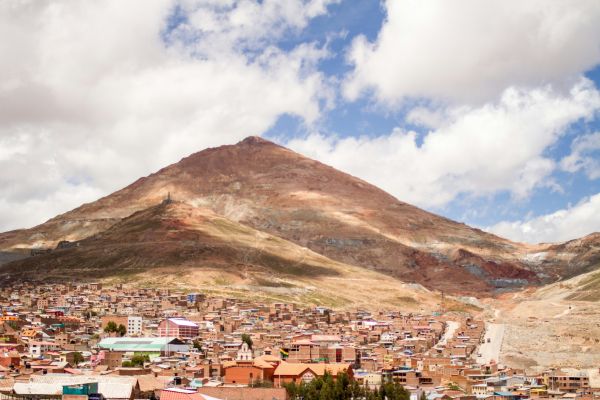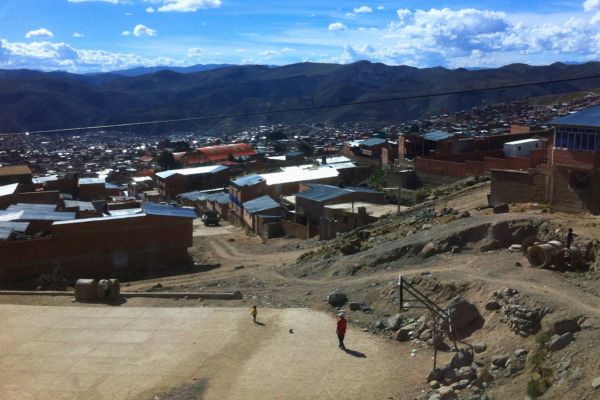Breathing in, breathing out! My subconscious mind reminds me as I climb the last few steps to a vantage point behind the goal. I turn to watch the match unfolding between Real Potosí and San José. My lungs burn, the air thinner than I’m used to. I had arrived in Potosí only a few hours earlier, and before I could even catch my breath, I found out there was a local football match happening. Not one to miss the opportunity to see my first Bolivian Primera División game, I’m also witnessing the highest football match I’ve ever been to — at the Estadio Víctor Agustín Ugarte, a stadium where every breath counts.
The Stadium Where Every Breath Counts

Nestled in the heart of the Andes at over 4,000 meters, Estadio Víctor Agustín Ugarte is one of the highest football stadiums in the world. While this iconic venue is known for its unique location, it presents an unforgettable challenge for players who must compete in a region where the air is thin, and every breath feels like a struggle. As the players take the pitch, they battle not only their opponents but also the unforgiving altitude.
The Science of Breathing at High Altitude

At altitudes above 2,500 meters, the atmosphere contains significantly less oxygen, which can lead to faster fatigue and reduced performance. Players' bodies must work overtime to absorb enough oxygen, causing increased heart rates and rapid breathing. This makes it incredibly difficult to maintain pace, and teams that are not acclimated can quickly feel the effects of altitude sickness.
One famous example occurred during the 2009 World Cup qualifier, when a star-studded Argentina team, including Lionel Messi, suffered a shocking 6-1 loss to Bolivia in La Paz. Despite their elite status, Argentina's players struggled to adapt to the high-altitude conditions.
Visiting teams have two main options for dealing with the altitude: some fly in just before the game to minimize exposure, while others arrive days ahead to better acclimate. Whichever approach a manager takes, one common strategy is to emphasize the importance of "letting the ball do the work" — reducing the need for intense physical exertion.
Historical Context of the Stadium

Estadio Víctor Agustín Ugarte isn’t just about the altitude. The stadium is an integral part of Potosí’s football culture, built against the backdrop of Cerro Rico, the mountain that was central to the region’s silver mining boom. It has hosted numerous iconic matches, including Copa Libertadores games featuring top South American clubs such as Boca Juniors, River Plate, and several Brazilian powerhouses.

The challenges of playing in such an environment are heightened by travel logistics. For example, when Boca Juniors traveled to Potosí, they faced additional hurdles due to renovations at the local airport. Forced to land in Sucre, over 150 kilometers away, they had to navigate winding mountain roads in 4x4 vehicles — one of which broke down along the way.

The Challenge for Visiting Teams
For teams accustomed to playing at sea level, the high altitude presents a unique challenge. Boca Juniors’ encounter at the stadium was a prime example of this. Fatigue was evident throughout the match, and the team struggled to adapt. To make matters worse, Nacional Potosí wore kits that resembled those of their historic rivals, River Plate, adding a psychological edge to the already difficult match.
In the end, Nacional Potosí secured a 1-0 victory, proving that the challenges of playing at such an extreme altitude are not just physical but also mental.

To Sum It Up:
Estadio Víctor Agustín Ugarte stands as a testament to the resilience of both the Potosí community and the athletes who brave the high-altitude conditions. Every breath is harder to take, yet the passion for football remains unwavering. The stadium not only represents the rich history of Potosí but also embodies the spirit of Bolivian football. As teams continue to face the challenges of this iconic venue, the legend of Estadio Víctor Agustín Ugarte will endure, solidifying its place in the tapestry of South American football.
